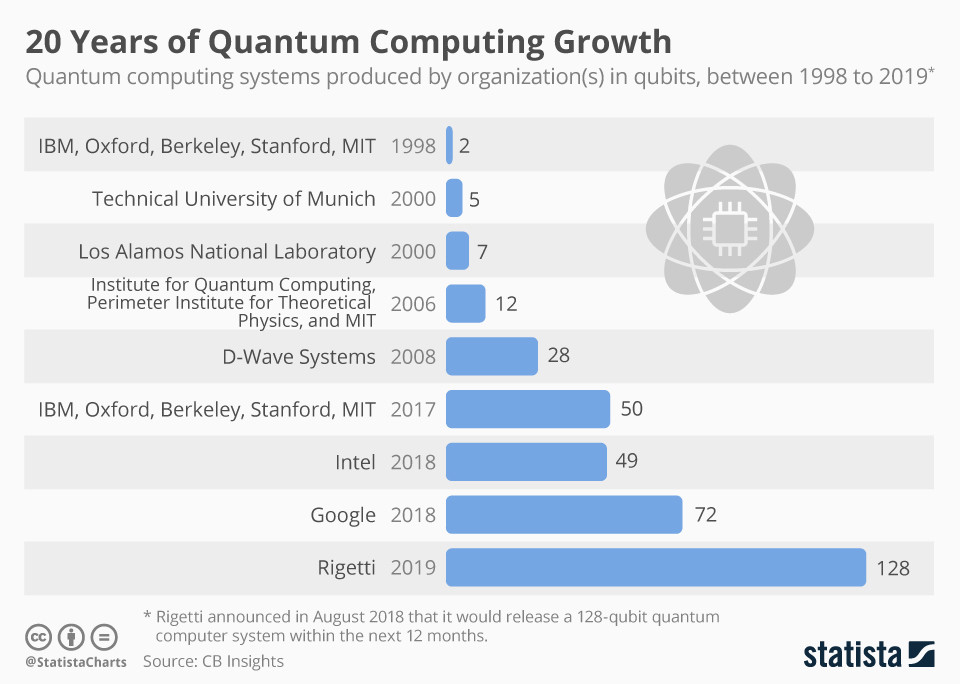In 1936, Alan Turing proposed the Turing machine, which became the foundational reference point for theories about computing and computers. Around the same time, Konrad Zuse invented the Z1 computer, considered to be the first electromagnetic binary computer.
What happened next is history, and in our world today, computers are everywhere. Our lives are dramatically different from how they were even at the end of the 20th century, and our mobile phones have far more powerful CPUs than desktop computers did only few years ago. The advent of the Internet of Things brings computer power into every minute detail of our lives. The world wide web has had such a transformative effect on society that many people can’t even remember a life before they were online.
The major catalyst behind this transformation was the discovery of silicon, and its use in the production of good transistors. This occurred over a period of more than 100 years, dating from when Michael Faraday first recorded the semiconductor effect in 1833, via Morris Tanenbaum, who built the first silicon transistor at Bell Labs in 1954, to the first integrated circuit in 1960.
We are about to embark on a similar journey in our quest for building the next-generation computer. Quantum physics, which emerged in the early 20th century, is so powerful and yet so unlike anything known before that even the inventors had a hard time understanding it in detail.
A history of the future
In the early 1980s, Richard Feynman, Paul Benioff and Yuri Manin provided the groundwork for a completely new paradigm of quantum computing, introducing the idea that quantum computing had the potential to solve problems that “classical computing” could not. And so quantum computing came into its own.
Peter Shor published an algorithm in 1994 capable of efficiently solving problems in cryptography that are hard to solve for classical computers – that is, the vast majority of computers used today. In fact, Shor’s algorithm continues to threaten the fundaments of most encryption deployed across the globe.
The problem was that, in 1994, there was no quantum computer in sight. In 1997, the first tiny quantum computer was built, but the field really took off only when the Canadian startup D-Wave revealed its 28-qubit quantum computer in 2007.
Similar to the trajectory of non-quantum communication, which took more than 100 years from discovery to mass use, quantum computers are now maturing very quickly. Today, many players are engaged in a battle over who can build the first powerful quantum computer. These include commercial entities such as IonQ, Rigetti, IBM, Google, Alibaba, Microsoft and Intel, while virtually all major nation states are spending billions of dollars on quantum computing development and research.
Quantum computers are powerful yet so difficult to build that whoever can crack the code will have a lasting powerful advantage. This cannot be understated. Here’s a striking example of the power of quantum computing.

Bar chart shows progress in quantum computing over the years
Quantum leaps: growth over the years
Image: Statista
To break a widely used RSA 2048-bit encryption, a classical computer with one trillion operations per second would need around 300 trillion years. This is such a long time that we all feel very safe.
A quantum computer using Shor’s algorithm could achieve the same feat in just 10 seconds, with a modest 1 million operations per second. That’s the power of quantum computers: 300 trillion years versus 10 seconds.
Another reason why nation states pour so much money into the field is precisely because, with it being so difficult, any achievement will directly yield a lasting advantage.
So where are quantum computers today, and where are they headed?
Quantum computing: an ongoing process
Considering the immense challenges to building quantum computers, I’d say we are roughly where we were in around 1970 with classical computers. We have some quantum computers, but they are still pretty unreliable compared to today’s standard. We call them NISQ devices – Noisy Intermediate-Scale Quantum devices. Noisy because they are pretty bad, and intermediate-scale because of their small qubit number. But they work. There are a few public quantum computers available for anyone to programme on. IBM, Rigetti, Google and IonQ all provide public access with open-source tools to real quantum computing hardware. IBM even sells a quantum computer that you can put in your own data centre (the IBM Q System One).
But these are not yet powerful enough to break RSA 2048-bit keys, and probably won’t be for another 10 to 20 years.
The comparison date of 1970 works from another angle, too. In October 1969, researchers sent the first message over the internet (it was called ARPANET then). When they tried to send the one word “login”, the system crashed after sending “l” and “o”. It later recovered and the message was successfully sent.
Today, we are also building a quantum communication system that doesn’t communicate bits and bytes, but quantum states that quantum computers can understand. This is important so that we can build up a quantum version of the internet.
It is also important as a way of encrypting communication, since the quantum channel provides some inherent physical guarantees about a transmission. Without going into too much detail, there is a fundamental property whereby the simple act of wiretapping or listening into a communication will be made detectable to the parties communicating. Not because they have a fancy system setup, but because of fundamental properties of the quantum channel.
But quantum computers are not just useful for cryptography applications and communication. One of the most immediate applications is in machine-learning, where we are already today on the cusp of a quantum advantage – meaning that the quantum algorithm will outperform any classical algorithm. It is believed that quantum advantage for machine-learning can be achieved within the next 6-12 months. The near-term applications for quantum computing are endless: cryptography, machine-learning, chemistry, optimization, communication and many more. And this is just the start, with research increasingly extending to other areas.
Google and NASA have just announced that they have achieved ‘quantum supremacy’. That is the ability of quantum computers to perform certain tasks that a classical computer simply cannot do in a reasonable timeframe. Their quantum computer solved a problem in 200 seconds that would take the world’s fastest supercomputer 10,000 years.
The problem that was solved is without any practical merits or implications, yet it demonstrates the huge potential quantum computers have and the ability to unlock that potential in the coming years.
This opens up a completely new era where we can now focus on building quantum computers with practical benefits and while this will still be many years away, it will be the new frontier in computation.
Andreas Baumhof, Vice President of Quantum Technologies
Share this
You May Also Like
These Related Posts

Cloud Experts Not Ready for Quantum Threat

Why are Current Quantum Computers "Noisy"?



